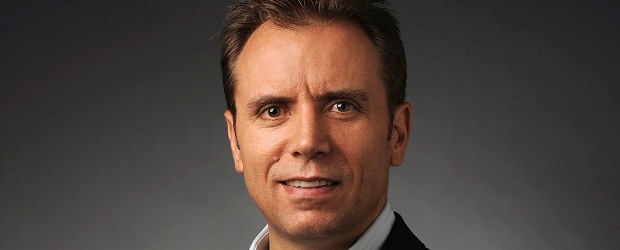LAS VEGAS – Four of the top CIOs in the high tech industry basically shattered the notion that solution providers need to gain trusted advisor status with them.
The trusted advisor approach is one where a key executive at a solution provider organization makes contact with CIOs to spark a relationship that would see them become a primary supplier of IT for that company.
At the McAfee Focus Conference, held here, Patti Hatter, CIO of McAfee, Kim Stephenson, CIO of Intel, Shel Waggener, CIO of Internet2, and Michael Goltz, CIO of SAP all agreed that they give their full support to channel partners because they know the customer’s business and they know the products instead of direct vendors who only know the product. However, where the break down occurs is when solution providers skip over the proper channels of communications to get to the CIO.
“I hire people I trust to do their jobs and so if you think you have to go around them to win a deal; think again,” warned Stephenson. “So for those people who reach out to me and bypass my team I want you to know how I feel about it,” she added.
Both Hatter and Stephenson agreed that solution providers need to understand that CIOs focus on the big picture and would have no interest in unsolicited pitches.
“I do not look at email blasts nor do I reply to cold calls,” Hatter said.
Stephenson said: “My advice to solution providers is to stop investments in cold calls and email blasts because it does not get my attention.”
Also avoid the CEO. Despite being a decision maker Stephenson said that “if the CEO is making IT solution decisions then it time to get another CEO.” While the CIO is engaged with the CEO and the board on security posture, much of the information for that discussion comes from members of the CIO’s staff. A solution provider would be more effective to convey how a security posture can be addressed.
Goltz says he meet with a lot of solution provider executives and what doesn’t work from his point of view is when these executive start with a generic trend presentation. “Being generic does not relate and there are too many solution provider generalists out there,” he said.
Most of the trend pitches are on social, mobile, cloud and security, but they lack industry perspective.
Another approach that usually does not work is creating fear. Waggener said that solution providers should not create a sense of fear with a CIO because they already know. “If there is power connected to the network; I will be blamed for it. It does not help to approach the CEO/CIO and say you should be terrified,” he said.
Inevitably if this pitch works it will be a quick fix solution, which will create tension on the short and long term. His advice is to be part of a broader strategy.
It’s not always the solution provider’s fault. Sales cycles play a big part in solution providers taking desperate measures to meet a number instead of developing a solution, said Waggener, who runs 250 University networks as part of Internet2.
“Solution providers keep selling the problem over and over again. And, what they do not know is the CIO already knows the problem because CIOs don’t sleep. To be a trusted provider don’t make it about the transaction or the product. Be there throughout the lifecycle and have a shared risk and reward strategy. Some salesman come to me with two days left in the quarter and say: ‘I will give you this discount if you sign now’ does not understand my long term issues. The process has to get more sophisticated,” Waggener said.
Stephenson acknowledged the dilemma in front of the solution providers today. If they do not call a CIO how would they ever obtain that coveted trusted advisor relationship? Her suggestion is to become a Twitter or Google+ celebrity. “We have real problems and we are seeking out help with our solutions. You may have that solution out there on social communities. I have seen them and contacted them,” she said.
Goltz says the experience solution providers provide the customer makes a big impact on the relationship. “I look at if I have a good experience. I will acknowledge that to the partner and in the end if there is a good experience they should be invited back especially if they treat the customer with a long term perspective,” Goltz said.
Stephenson said that in the event of a crisis a solution provider should take an “everyone all in” strategy and then sort out who gets paid in the end. “If you start with the transaction first it will lead to a broken relationship,” she said.






This is an excellent article – with an utterly misleading title and opening two sentences.
Your whole premise is that a trusted advisor relationship is “where a key executive at a solution provider organization makes contact with CIOs to spark a relationship that would see them become a primary supplier of IT for that company.”
Wrong, wrong, wrong. And I have some standing to say that, having written the book The Trusted Advisor. I am seeing a disturbing trend in the IT industry to “dumb down” and mislabel the concepts. Let me try and be clear.
Common sense says that if you’re going to be trusted by a senior client, there are several things that are suicidal. Those include: going around the person to their boss; trying to sell instead of offering counsel; focusing on the transaction rather than the relationship; selling technical solutions to a non-technical client; focusing solely on the problem rather than the context, timeframe and relationship.
In fact, those very points are made by the people you interviewed.
How, then, do you conclude that the strategy of being a trusted advisor consists in violating every one of those points? I don’t see that equation being made anywhere other than in your headline and opening sentences.
The opposite is true. A true trusted advisor relationship focuses on the client’s long term success – a sale is a byproduct, not a goal. A trusted advisor will be the first to tell you the limitations of their product or service, and even to recommend a competitor if that is the right thing to do in the situation. A trusted advisor is collaborative, client-focused, transparent and focused on the long term. Anything less is clearly not worthy of the term. To claim otherwise is to deny the dictionary and commonsense.
These are all simple, obvious concepts well grounded in common sense, ones that I and others have written about at length. I am concerned that through sloppy language and lazy writing we get articles like this, which purport to call “trusted advisor” relationships as being self-oriented, deceitful, and short-term focused.
Please excuse my strong language here: I think it is important that a good concept not get trashed by claiming it to be something it is not or should not be.
Charles H. Green
author, Trust-based Selllng
co-author, The Trusted Advisor
co-author, The Trusted Advisor Fieldbook
More at http://www.trustedadvisor.com